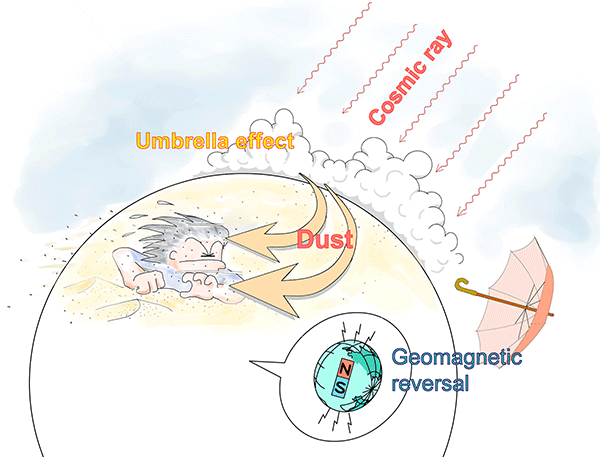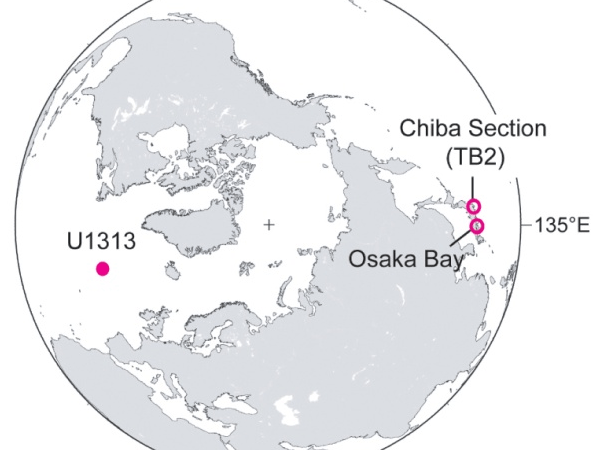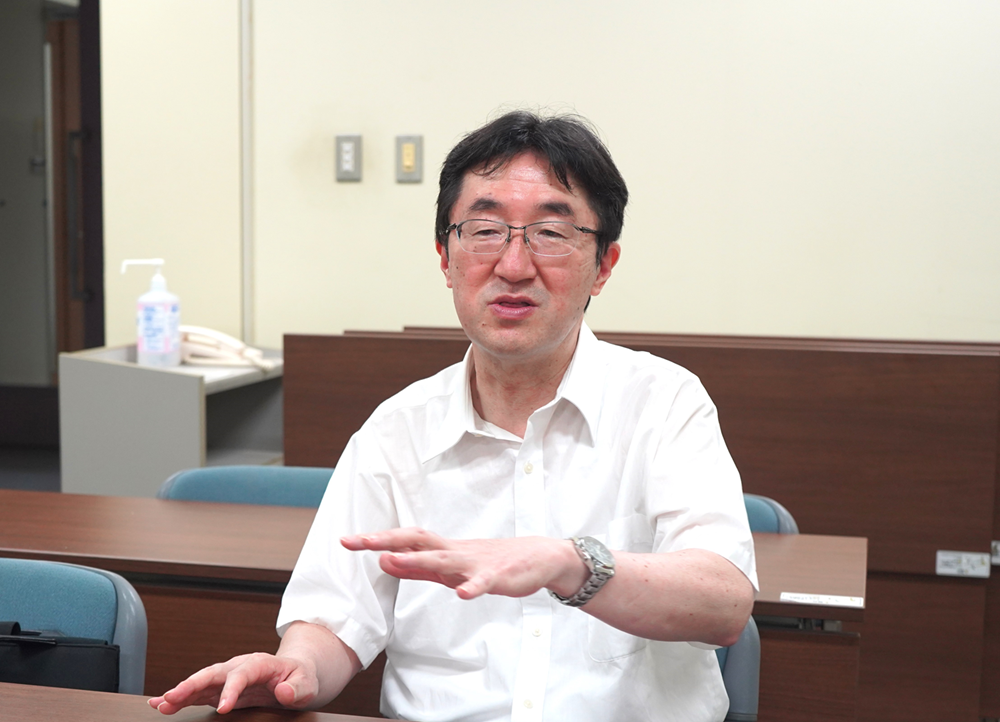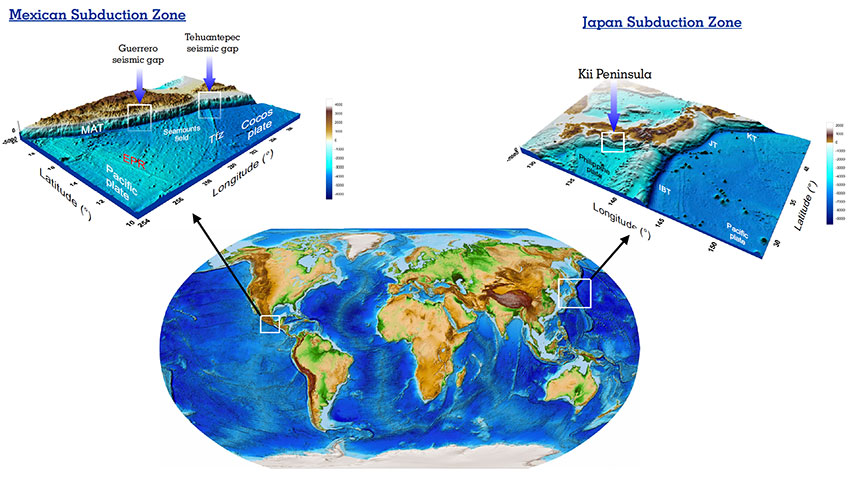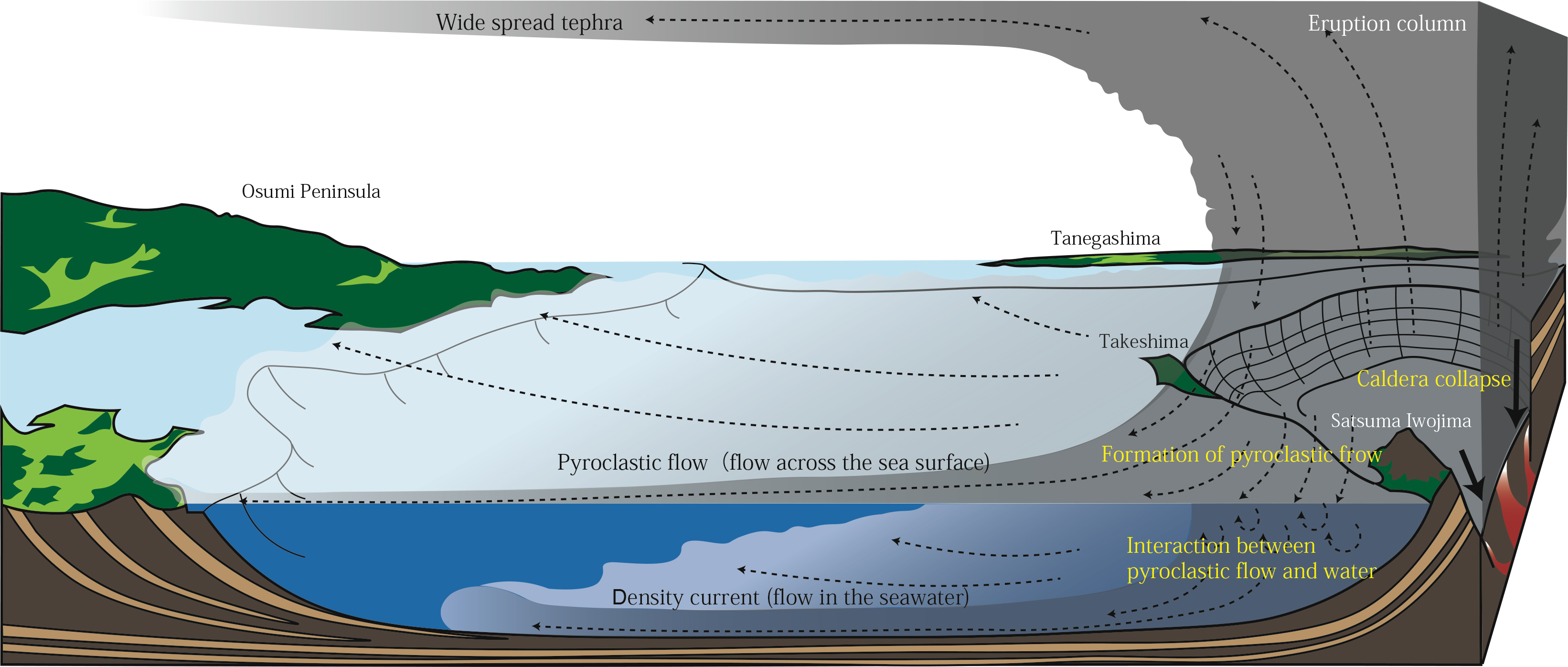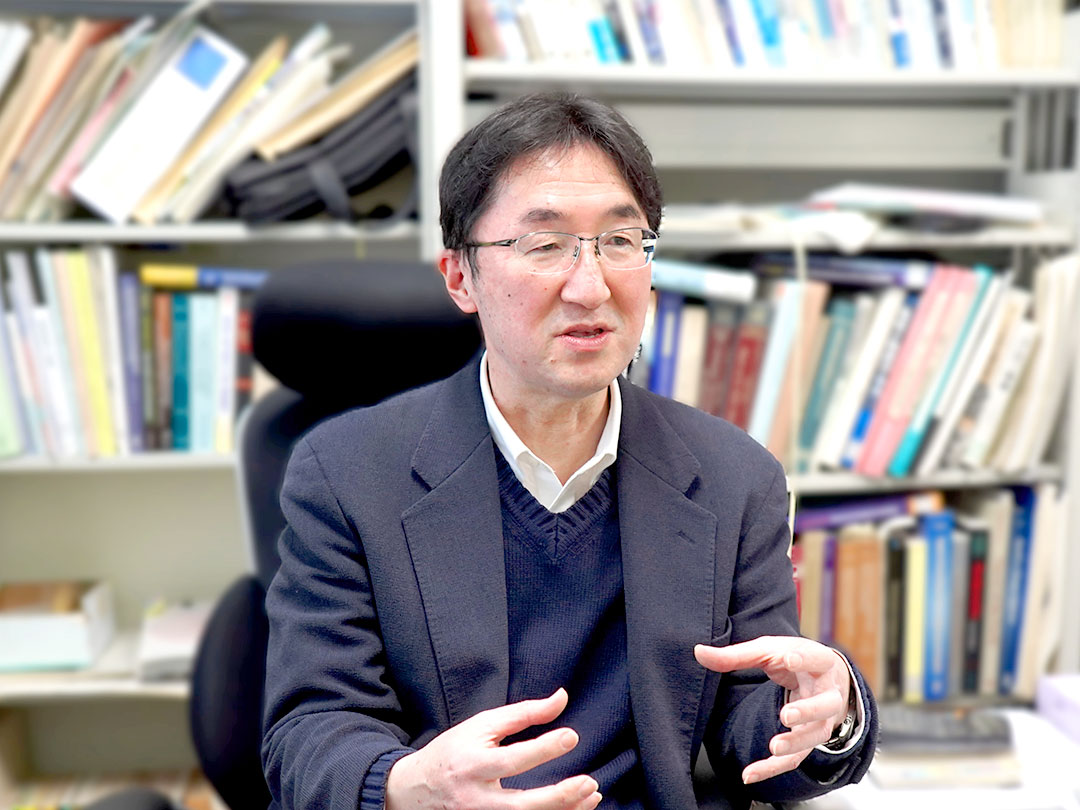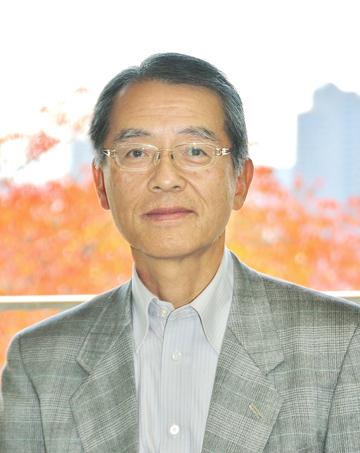
How was the Earth’s climate formed, and how will it change? The branch of geology known as stratigraphy looks at layers of rock (strata) and the history they represent. Professor HYODO Masayuki, a member of the Research Center for Inland Seas and the Department of Planetology in the Kobe University Graduate School of Science, uses stratigraphy to investigate the relationship between geomagnetic reversals and climate changes in the Quaternary Period (from 2.6 million years ago until the present). In addition to earth science, his studies contribute to anthropology and archaeology by offering a timeline for human evolution based on the Earth’s magnetic field reversals. He is also a research leader at the Chiba Section, the stratum in Japan’s Chiba prefecture, Ichihara, where detailed records have led to the discovery of multiple extreme climate change events. These results have contributed to paleoclimatology and paleoceanography, and possibly to the geological era from about 770,000 to 125,000 years ago, which is likely to be named “the Chibanian” after this important geological site.
Magnetic field records buried in strata
Prof. Hyodo:
The Quaternary Period is the geological era that began 2.6 million years ago, when a full-scale ice age started. It is colder than the preceding era, with a continuous cycle of glacial and interglacial periods. It is also known as the Anthropogene Period – the period when genus homo appears and starts to use stone tools.
My research mainly focuses on variations in the Earth’s magnetic field. In the center of the Earth the convective motion of liquid iron takes place, creating a magnetic field, and sometimes this field reverses. I investigated the geomagnetic changes by measuring the natural magnets in the strata (such as magnetite). During the Quaternary Period, five geomagnetic reversals occurred at intervals of several tens to hundreds of thousands years, two reversals with the shorter interval of 10,000 years, and two events with an unconfirmed timescale.
The glacial and interglacial climate cycle is mainly caused by changes in the amount of solar radiation due to alterations in the Earth’s orbital path and rotational axis (the Milankovitch cycle). This happens in 20,000 to 400,000 year cycles. However, if climate change occurs over shorter timespans of several thousand or several hundred years, some changes are influenced by the Earth’s magnetic field. When the Earth’s magnetic field reverses, its magnetic strength temporarily weakens, and as a result cosmic ray flux reaching the Earth’s surface increases. The cosmic rays ionize the atmosphere, increasing the cloud condensation nucleus and cloud cover. It has been suggested that this cloud cover leads to the Earth’s cooling.
Rapid sedimentation equals high resolution
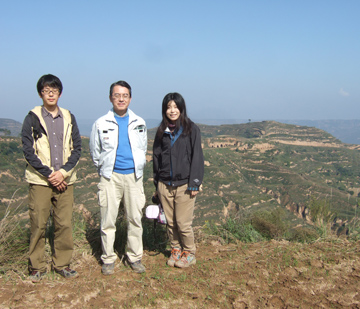
Professor Hyodo’s research group extract strata samples, and comprehensively analyze them for geomagnetic changes, fossilized pollen, diatom fossils, and isotope ratios of oxygen and carbon. They use this data in stratigraphy research.
Prof. Hyodo:
The Osaka Bay sediment in western Japan accumulates more than five times faster than typical ocean floor sedimentation. In 1997, Japan’s National Institute of Advanced Industrial Science and Technology (AIST) collected a 1700-m core from Osaka Bay. The Kobe University team members started a complete paleomagnetic analysis of the core sample and acquired high resolution data for geomagnetic reversal, on a 100-year interval scale. They published this data in 2006. Most of the previous data was on a lower resolution, at 2000-year intervals on average. They discovered that regarding the last magnetic reversal that occurred 780,000 years ago, there were at least four short-lived reversal episodes spanning a few hundred years. Evidence for these episodes has also been found in Java, Indonesia and the Loess Plateau in China.
At the Chiba Section, we received funding from the Japanese government, started boring in 2010, and obtained extremely high-resolution data – for 10-year intervals. The Boso Peninsula in Chiba prefecture, where the Kazusa formation is located, is the point where the oceanic Pacific plate and the Phillippine Sea plate subduct below the continental North American plate. The Boso Peninsula uplifted to become part of a land mass in the Late Quaternary Period, before which it was a sedimentation area on the deep ocean floor. The sediment materials from land accumulated quickly in this area, and the accumulation rate is the fastest in the world. This means that we can obtain paleoceanic environmental records at an unprecedentedly high resolution. Combined with data from Osaka Bay and the North Atlantic Ocean, we were able to confirm multiple rapid climate warmings and coolings that occurred in all three areas simultaneously with intervals of just a few hundred years.
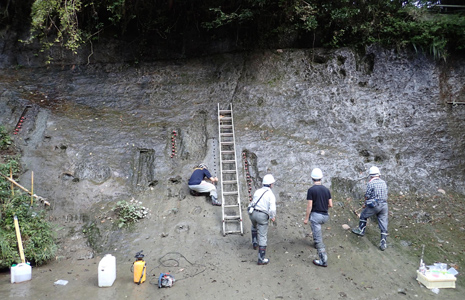
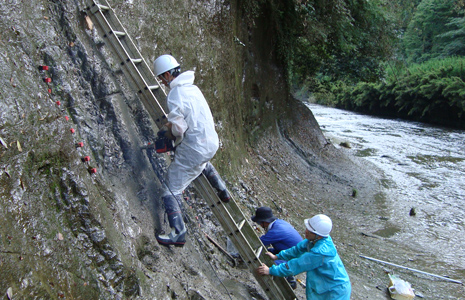
A timeline for the evolution of early man
Paleomagnetic and stratigraphic methods, used to date the year of strata based on changes in the Earth’s magnetic field, play an important role in anthropology and archaeology.
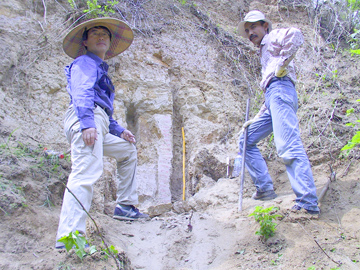
Prof. Hyodo:
In the 1980s, at the Sangiran early hominid site in Java, Indonesia, we dated the fossils of Homo erectus. Near the highest strata bearing the fossils, we confirmed the magnetic reversal that took place 780,000 years ago, and published a paper in 1993 stating that early hominids in Java lived between 1.1 million and 780,000 years ago. An American research team claimed that it was between 1.8 and 1.5 million years ago, and the debate continued for many years. However, the new high-resolution magnetic reversal record from the restudy in Sangiran from 2000 to 2010 confirmed the magnetic reversal in Java that occurred 780,000 years ago, having the same characteristics as the Osaka Bay core, and I think this settled the debate. The American team didn’t release a counter statement.
We have also done dating research for the strata where fossils of hominoids (primates including great apes and humans) and Acheulian stone tools were found in Kenya and Ethiopia, respectively, and Homo erectus fossils in China’s Yunnan province. The Quaternary Period was colder than previous ages, and it became colder still, so in the Early Quaternary Period Austraropithecus were extinct. However, early genus Homo invented stone tools and were able to survive to finally become modern man. We can say that human evolution and the Earth’s climate changes are closely related.
Pre-industrial climate change and cosmic rays
Global warming is an international problem. The influence of carbon dioxide (CO2) has been confirmed, but the influence of cosmic rays, controlled by solar activity and the Earth’s magnetic field, has also drawn attention.
Prof. Hyodo:
In 1997 the Danish researcher Svensmark proposed that the amount of cosmic rays influences the amount of cloud cover (the Svensmark effect). Criticism and debate about this is still ongoing, but my research group learned that during the magnetic reversals that occurred 1.07 million and 780,000 years ago, the climate cooled when the Earth’s magnetism fell below 40%. We presented these findings in 2013. Climate warming since the industrial revolution can be explained by an increase in CO2 levels, but the warming in the Middle Ages before that, and the following cooling cannot be explained. The Svensmark effect can be used to explain both these phenomena. It is a fact that CO2 levels in our atmosphere are rising, but I don’t think we have conclusive proof that this is the sole cause of global warming.
Paleoenvironmental studies of climate warming and cooling, and the sea level changes that this causes, can provide hints for thinking about the current problem of global warming.
Prof. Hyodo:
In geomagnetic excursions, the Earth’s magnetic field does not fully reverse, but experiences a significant and usually temporary change. The most recent documented excursion occurred 40,000 years ago, but one may have occurred 17,000 years ago. During these phenomena, the Earth’s magnetic field may have been reduced to one tenth of its normal strength, and in my future research I will look at the climate of these periods in detail. I also want to investigate the relationship between solar activity and climate changes. Both solar activity and climate change occur in 200-year cycles. When solar activity increases, this repels cosmic rays, so there is a possibility that it may influence the Earth’s climate by increasing or decreasing cloud cover. I want to confirm this by looking at changes in the nuclides produced by cosmic rays, such as beryllium-10.





